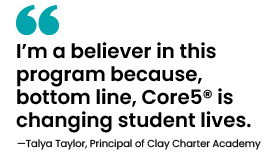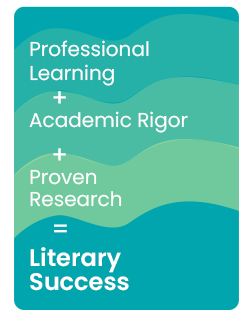
Parents want additional academic options for their students, and expanded enrollments mean leaders like you will start to feel additional pressure from your boards and authorizers to demonstrate that charter schools are a valuable investment of community resources.
One way to do that? Ensure you are selecting the right literacy curriculum and professional development programs by choosing innovative, research-proven and classroom-tested programs with demonstrated successful outcomes.
That translates to:
- Academic accountability to your educator leaders and authorizers
- A solid return on instructional dollars (ROI) that drive results
- Teacher confidence and retention
- Proven programs that work for all students
HELP STUDENTS SOAR TO GRADE-LEVEL PROFICIENCY
Principal Talya Taylor committed to changing the fact that 49% to 70% of students at Clay Charter Academy in Florida were reading below grade level. As a former reading teacher, Taylor knew how important it is to master foundational skills in the early grades before text grows more complex in upper grades. The school had all the elements in place—specifically, Lexia Core5® Reading, a blended learning literacy program for K– 5 students.
Under her guidance, the school implemented the program with fidelity the following fall. In only six months, the percentage of students working at or above grade level increased from 40% to 82%. READ MORE →

Complete the form to download the Infographic
By clicking "Submit", you agree to receive marketing communications from Lexia Learning. See full terms.

During the 2020-2021 pandemic school year, 150,700 students in 1,459 charter schools used the online components of Core5 as recommended. Students of all abilities made progress:
- Students working at grade level grew from 49% to 84% in one school year
- The number of students working below grade level was reduced from 51% to 16%
"THERE'S NOTHING MORE IMPORTANT THAN THE GROWTH WE SEE IN OUR STUDENTS."
At Somerset Academy in Miramar, Florida, Principal Alexandra Prieto wanted a literacy program with proven efficacy results. Her teachers needed progress-monitoring data to differentiate instruction for all students—particularly the school’s Emergent Bilinguals, who compose about a quarter of the student population.
So how did the percentage of K–2 students working in or above grade level increase from 45% to 95%, and the percentage of students working below grade level in decrease from 52% to 5% in less than one year? FIND OUT →
We take privacy seriously, view our privacy policy for more information.
